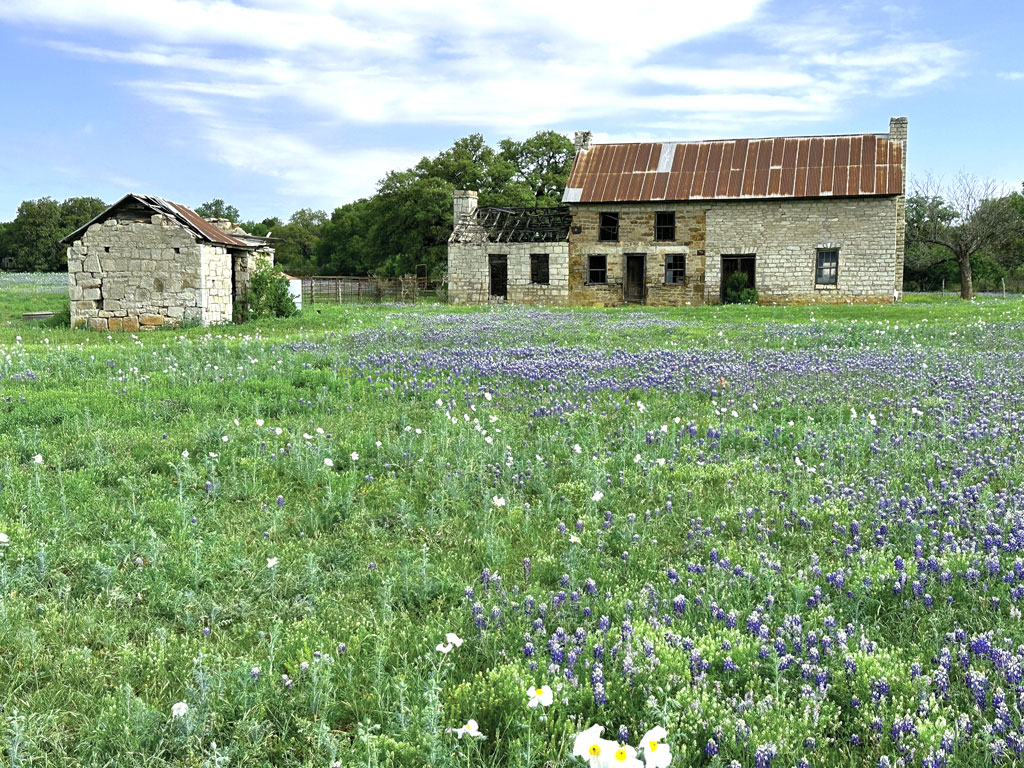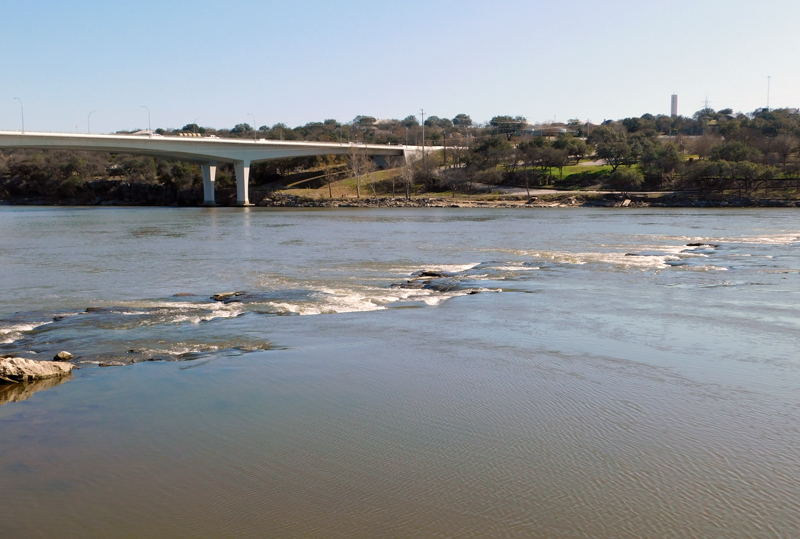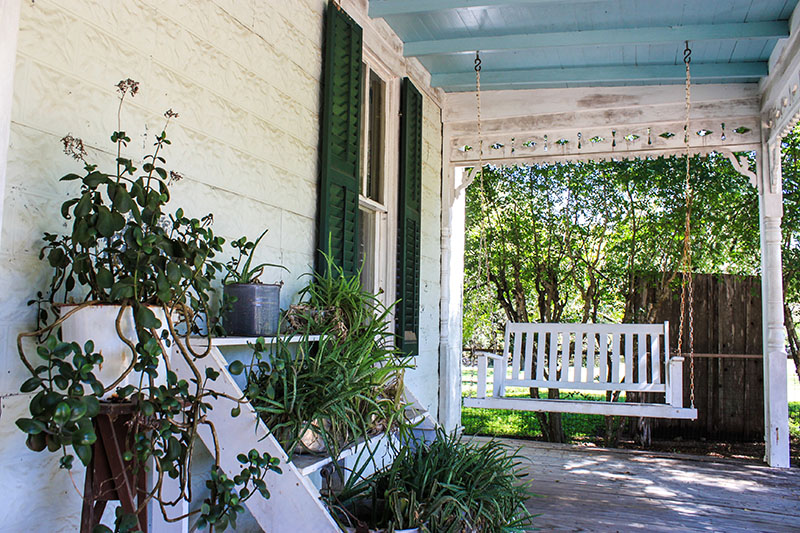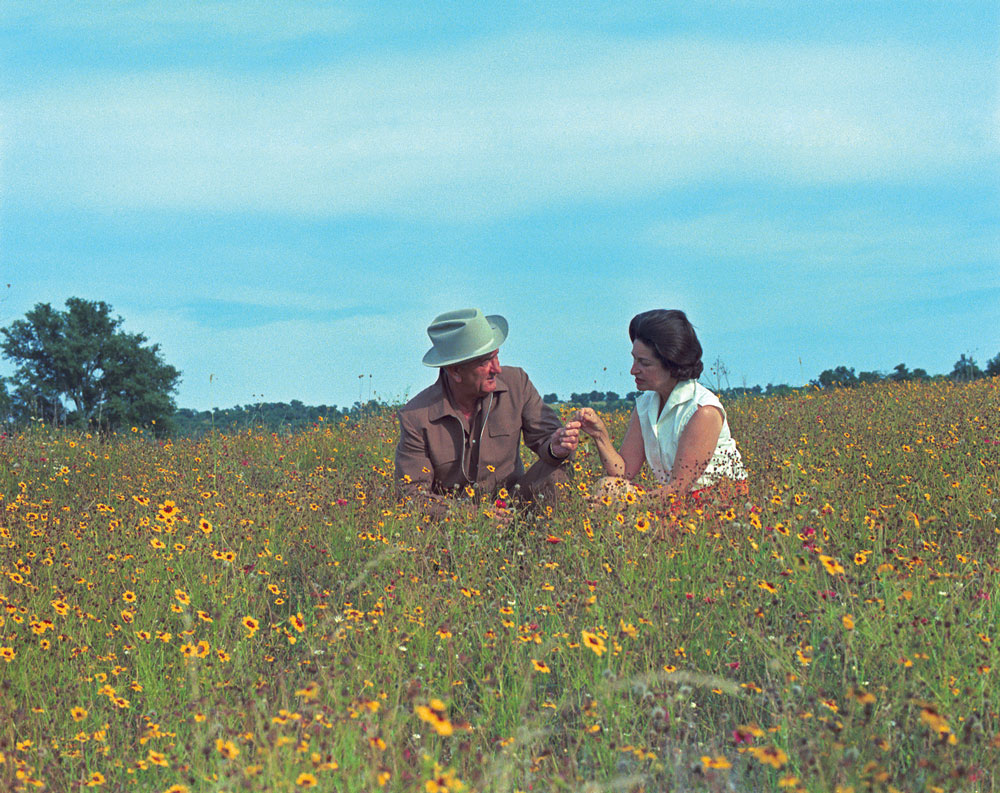
The Indian Marker Tree in 2010 showed how its unique shape caught the eyes of officials of the Texas A&M Forest Service. The three main branches grew in three different directions with one branch growing parallel to the ground. Forest officials believe Comanche Indians tied the tree to bend it to serve as a marker on their trail, which signaled an area that contained clean water to allow them to stay overnight. Photo courtesy of JoAnn Myers
For around 200 years, the Indian Marker Tree watched over the banks of Hamilton Creek in Burnet, serving as a marker for the Comanche people in its youth and growing into a beloved part of today’s community. Now, the tree is gone.
In 2015, property owner Mark Van Brocklin made the tough decision to cut down the old live oak after it died. It wasn’t something he relished doing.
“My kids were raised climbing it,” he said. “It was sad for them to see it go.”
The Indian Marker Tree was believed to be about two centuries old, said Gretchen Riley of the Texas A&M Forest Service. The tree had appeared in “Famous Trees of Texas, Texas A&M Forest Service Centennial Edition,” a book published by the service to honor 100 trees in the state. Many of those trees no longer exist, Riley said. They will keep their distinction, however, and that includes the Indian Marker Tree.
“It’s one of our family trees in Texas,” she said. “It’s a small ethnic group of trees that’s witnessed exciting eras in Texas history. It’s a tangible historic bridge to the past.”
The tree was a living example of the community’s proud history, she said.
“People love their famous trees,” Riley said. “What we find are residents from the area all feel ownership of the tree and a connection. There are very few documents of marked trees.”
The Indian Marker Tree was a living memorial to the Comanche people who spent their summers on the High Plains of the Texas Panhandle and their winters in Mexico. During the fall, they would camp at Hamilton Creek because of the sweet water, the pecan trees, and flint and other hard rocks.
Early settlers noted the Comanches would silently set up camp at night and pack up early in the morning, leaving just as quietly as they came. To help mark the better campsites on their trail system, they would take a sapling-size tree—like the Indian Marker Tree—bend it to the ground, and tie it in place.
As Burnet’s famous tree grew, it kept its horizontal shape.
“It really is something that can’t be duplicated,” Riley said. “It was a tangible connection to the past that’s irreplaceable. It’s a loss to all of Burnet County residents but also to all of Texas because it was part of all of us to some extent.”
The Texas A&M Forest Service was notified that the tree had “flamed out,” Riley said.
“When it does that, it usually means it looks like it’s on fire,” she said. “When it does that, it’s beyond repair.”
Under the right conditions, an oak tree can live for as long as 500 years, Riley said. She does not know what caused the tree to die. There’s speculation that underground trenching at the park and severe drought might have contributed. Underground work that disturbs the roots can lead to a tree’s decline and death, the forester said.
“It was a sad day for Burnet and a sad day for Texas,” Riley said.
Still, she and Van Brocklin hope residents remember the tree and learn from it.
“We just all need to enjoy that tree for the time we spent with it,” Van Brocklin said. “I got to enjoy it for 20 years.”












